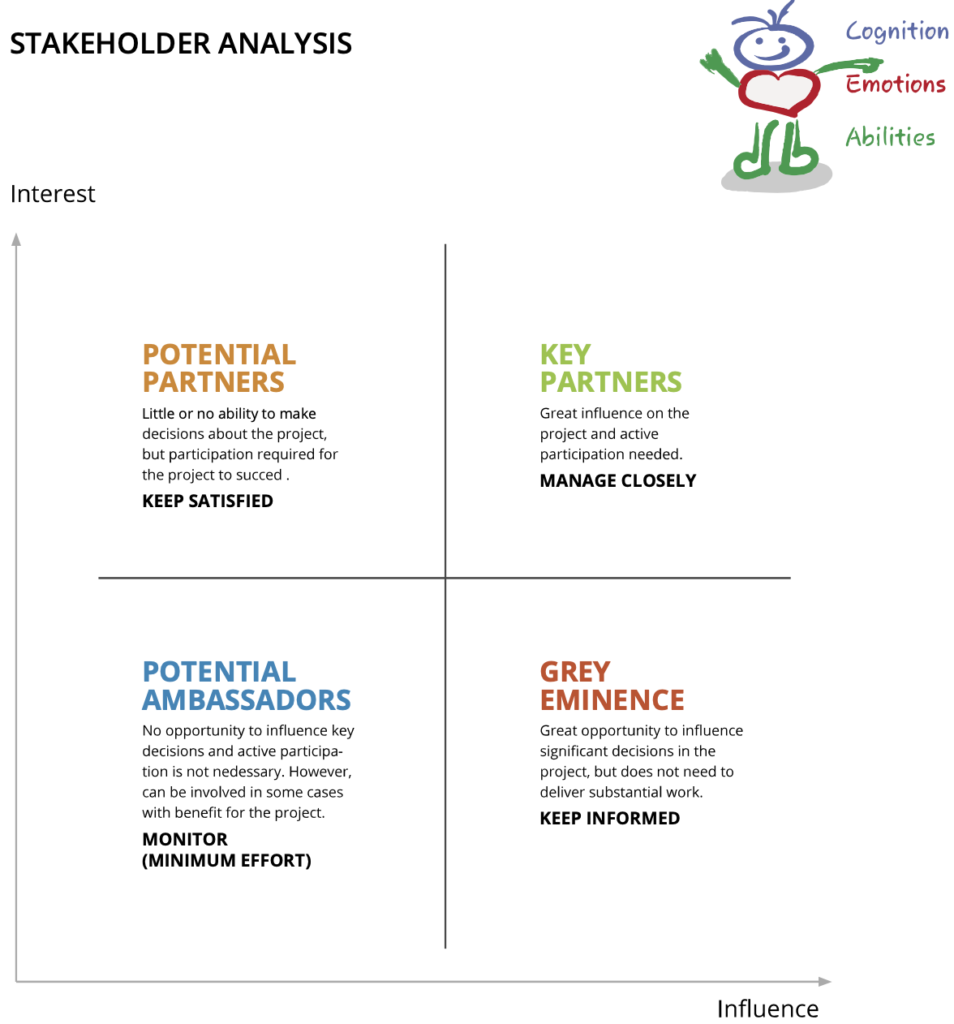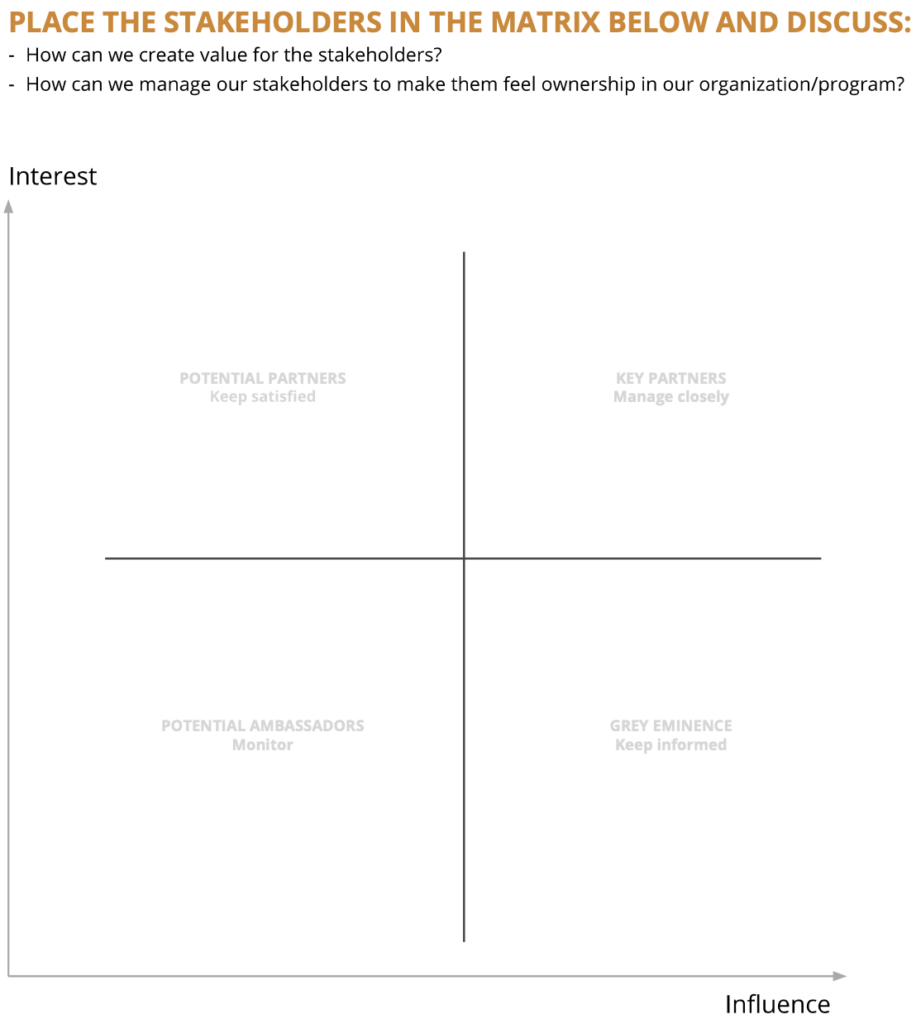Context Analysis

Step 1
Outside world
Discuss briefly:
- What is the general politic context and how does it influence and impact your organization?
- What is the general social context and how does it influence and impact your organization?
- What is the general economical context and how does it influence and impact your organization?
Step 2
Stakeholder analysis
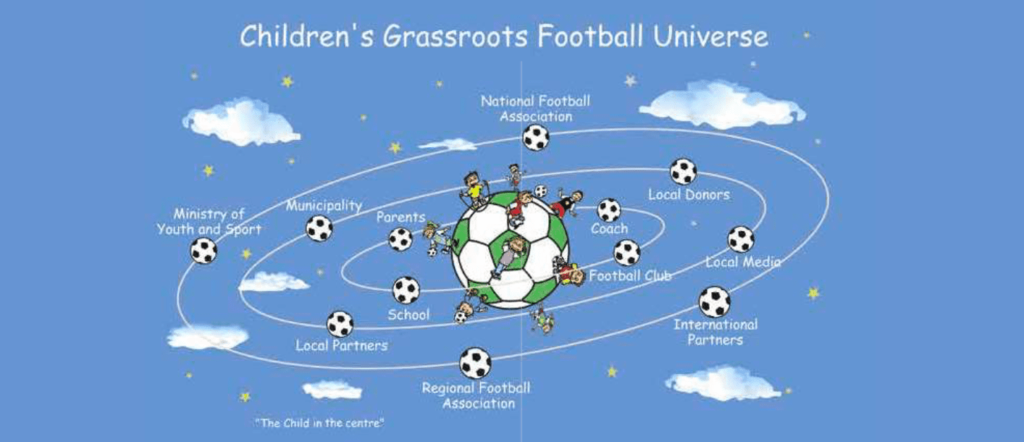
A stakeholder analysis is the process of identifying the individuals or groups that are likely to affect or be affected by a proposed action, and sorting them according to their impact on the action and the impact the action will have on them. This information is used to asses how the interests of those stakeholders should be addressed in a project plan.
Tip:
List all the parties, which are likely to be affected by the development, both positively and negatively, directly or indirectly.
Guiding questions:
- Who are affected directly by the program/organization?
- Who are affected indirectly by the program/organization?
- What is their interest in the program?
Step 3
Swot - Analysis
The SWOT Analysis is a useful technique for understanding your Strengths and Weaknesses, and for identifying both the Opportunities open to you and the Threats you face.
What makes SWOT particularly powerful is that it can help you in an easy way to uncover opportunities that you are well-placed to exploit. And by understanding the weaknesses of your organization, you can manage and eliminate threats that would otherwise catch your unawares.
More than this, by looking at yourself and your competitors using the SWOT framework, you can start to craft a strategy that helps you distinguish yourself from your competitors, so that you can compete successfully in your market.
You can use SWOT-analysis in two ways – as a simple icebreaker helping people get together to kick off strategy formulation, or in a more sophisticated way as a serious strategy tool.
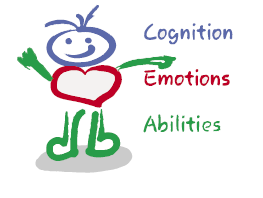
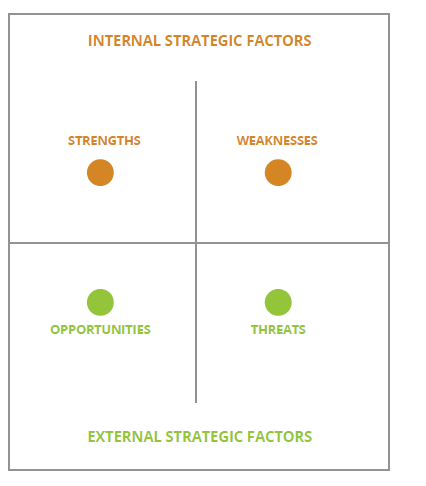
Strengths
Tip:
Consider your strengths from both an internal perspective, and from the point of view of your stakeholders in your market.
Also, if you’re having any difficulty identifying strengths, try writing down a list of your organization’s characteristics. Some of these will hopefully be strengths!
When looking at your strengths, think about them in relation to your competitors. For example, if all of your competitors provide high quality products, then a high quality production process is not a strength in your organization’s market, it’s a necessity.
Guiding questions:
- What advantages does your organization have?
- What do you do better than anyone else?
- What unique or lowest-cost resources can you draw upon that others cannot?
- What do people in your market see as your strengths?
- What is your organization’s unique selling proposition?

Weaknesses
Tip:
Consider this from an internal and external basis:
Do other people seem to perceive weaknesses that you do not see? Are your competitors doing any better than you?
It is best to be realistic now, and face any unpleasant truths as soon as possible.
Guiding questions:
- What could you improve?
- What should you avoid?
- What are people in your market likely to see as weaknesses?
- What factors lose you sales?
Opportunities
Tip:
A useful approach when looking at opportunities is to look at your strengths and ask yourself whether these open up any opportunities. Alternatively, look at your weaknesses and ask yourself whether you could open up opportunities by eliminating them.
Guiding questions:
- What good opportunities can you spot?
- What interesting trends are you aware of?
Useful opportunities can come from such things as:
- Changes in technology and markets on both a broad and narrow scale.
- Changes in government policy related to your field.
- Changes in social patterns, population profiles, lifestyle changes, and so on.
- Local events.


Threats
Guiding questions:
- What obstacles do you face?
- What are your competitors doing?
- Are quality standards or specifications for your job, products or services changing?
- Is changing technology threatening your position?
- Do you have bad debt or cash-flow problems?
- Could any of your weaknesses seriously threaten your business?

